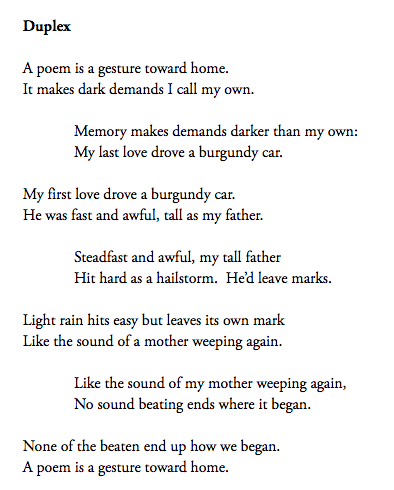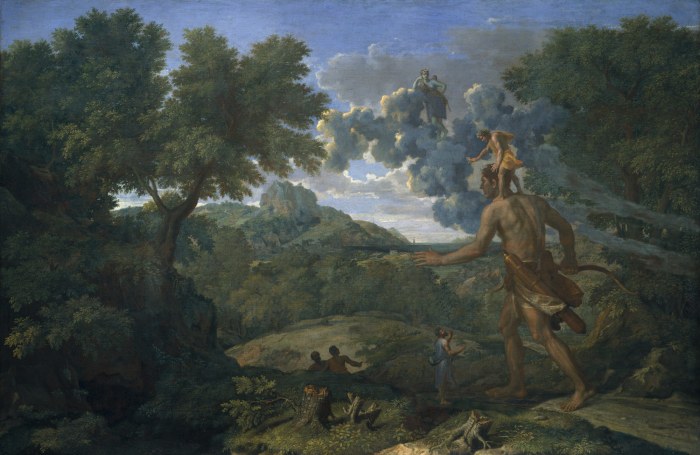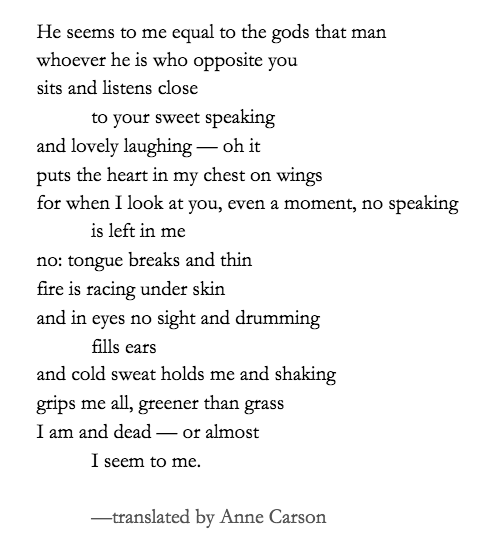Robert Pinsky’s new anthology The Mind Has Cliffs of Fall: Poems at the Extremes of Feeling opens with “The Man of Double Deed,” an anonymous poem found in the 1784 collection of English nursery rhymes called “Gammer Gurton’s Garland.” Here’s the poem:

Pinsky is obviously intrigued with this poem, citing it not only in this collection, but also in a column for Slate, and in his 2014 collection Singing School, where he calls it a “sinister . . . nursery rhyme”; in Cliffs of Fall, he states that the poem “exemplifies how poetry can join . . . method and wildness.”
My interest in the poem is perhaps the chief source of its seeming madness, the obsessive doubling of the language, known to rhetoricians as anadiplosis. Anadiplosis is a technique in which the last word (or words) of a phrase or sentence is repeated at the beginning of the subsequent phrase/sentence. Here’s a quick example from Richard II “The love of wicked men converts to fear; / That fear to hate, and hate turns one or both / To worthy danger and deserved death.” Typically, the structure of anadiplosis is climatic, building towards something in sequential steps (from fear to hate to death).
“The Man of Double Deed” follows no obvious sequence, with each new term often bringing up something unexpected, like a game of exquisite corpse:
When the seed began to grow,
‘Twas like a garden full of snow;
When the snow began to melt,
‘Twas like a ship without a belt;
When the ship began to sail,
‘Twas like a bird without a tail….
From seed to garden not hard to fathom, but how does snow melting in garden relate to a ship, or a ship to a bird? The reader may puzzle out possible connections (maybe the ship is floating on a sea of snowmelt?) but the sense of logic and inevitability so often present in anadiplosis is absent.
Moreover, the connection between each term of the sequence turns on “like,” each step a simile. The seed is like a garden full of snow, the garden is like a ship, the ship is like a bird. The chain of analogies begs the question: what is the poem actually talking about? What’s the real “deed” that’s being doubled and redoubled? Even the speaker is doubled, with the poem starting in third person and abruptly shifting to first person at line twelve: “Twas like a lion at my door.” The only certainty in the poem is the only certainty, period: death, thrice repeated, beyond all figuration.
++++++
Very recently poet Jericho Brown has been experimenting with a form of his own invention, the duplex (which he describes in detail here) and several appear in his new collection, The Tradition (Copper Canyon Press). It has the same number of lines as a sonnet, and the lines are roughly the same length (9 to 11 syllables). These moves evoke the sonnet form so that Brown can “gut the sonnet,” as he’s said in interviews and essays.
One way he does this is through an anadoplotic doubling, something he sees both in the repeated lines of the ghazal and the reiteration of the first line of a verse common in the blues:
Back in Black Mountain, a child will smack your face
Back in Black Mountain, a child will smack your face
Babies cryin’ for liquor, and all the birds sing bass.
—“Black Mountain Blues” by Bessie Smith
Those are the major technical aspects of the duplex, anyway—but knowing them in no way prepares the reader for the brutal reality of these unsettling poems. Here’s an example from The Tradition:

![]()
These are challenging poems to comment upon, in part because of the jump cuts—see lines 3 and 4, for example—but more so because of the emotionally charged subject matter. Reviews of The Tradition are studies in evasion of Real Content via technical chit-chat. I fear my own commentary may be another disappointing example.
Interestingly, Brown uses all these technical restrictions in the opposite way: to draw him into tough discussions that he would not have considered had he simply started with subject matter. The form makes “dark demands” on him. Elsewhere he comments:
I think poems—working with language and seeing where it may lead us, seeing what kinds of choices we make when we have to find a rhyme or a syllable—tell us things about our individual and collective subconscious minds.
To return to the poem: Alternating between lulling repetition and jarring juxtaposition, from last and first loves to a father figure and abuse, from hailstorm to light rain to a mother’s quiet tears, this poem leaves its mark on the reader. The swerves and juxtapositions urge the reader to supply stories that the poem merely gestures towards.
I’m not interested in “comparing and contrasting” these two remarkable poems, but allow me to make one observation: “The Man of Double Deed” portrays a disordered mind, but this duplex—indeed, all that appear in The Tradition—calls upon the reader not to merely understand another’s struggle, but to experience it with all of its discomfort and uncertainty. Each reader enters into a true and singular relationship with the poem, confronting its difficulties, but not necessarily resolving them.
In a discussion regarding the order of the poems in The Tradition, Brown informs us that
I wanted the reader to have everything that goes in a relationship. So, I knew there would be trouble. Do you understand what I mean? Just like I knew there would be joy, I knew there would be trouble because that’s what happens in a relationship. I knew that there would be moments at which the reader would be questioning what was going on.
This poem is a compelling instance of that trouble.
More posts on anadiplosis:
Addressing the Wound: Anadiplosis in Recent Poetry (on a poem by Robert Altmann)
Where to Draw the Line: Anadiplosis in Geoffrey G. O’Brien’s “Experience in Groups”
One Word Only is No Word: Anadiplosis in Sidney, Stevens, and Riding





 Nicolas Poussin: Blind Orion Searching for the Rising Sun (1658)
Nicolas Poussin: Blind Orion Searching for the Rising Sun (1658)

